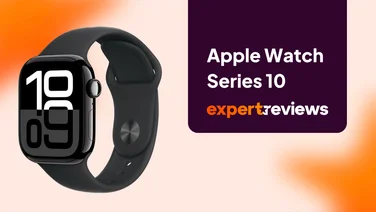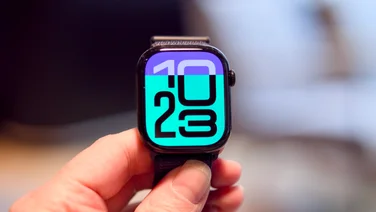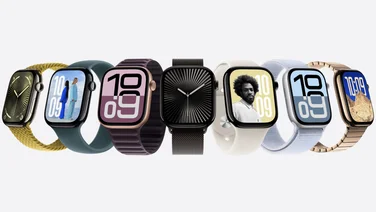To help us provide you with free impartial advice, we may earn a commission if you buy through links on our site. Learn more






















- Very durable
- Superb screen
- Feature-packed
- Expensive
- Uncomfortable strap
- Most features are on the cheaper Galaxy Watch 7
Smartwatches are all well and good, but they can feel both fragile and unsubstantial. Nobody can say that about the Samsung Galaxy Watch Ultra, for better or worse.
When it comes to smartwatches for adventurers and serious athletes, this is Samsung’s competitor. It’s rugged and feature-packed with a footprint that, on smaller wrists, could be unflatteringly compared with a tag for prisoners on day release.
Is Samsung’s answer to the Apple Watch Ultra 2 worth its high cost of entry? Let’s find out.
Samsung Galaxy Watch Ultra review: What you need to know
Along with the Galaxy Watch 7, which I’ll be reviewing soon, Samsung has an offering for power users: the Galaxy Watch Ultra. This isn’t the company’s first attempt at this, with the Galaxy Watch 5 Pro being similarly positioned back in 2022.
While the basic Galaxy Watch 7 is designed to take care of all your everyday fitness tracking and smartwatch needs, the Galaxy Watch Ultra is aimed at endurance athletes and those wanting something a bit more rugged.






















Its titanium body has been “tested to military standards” and can deal with altitudes between -500m and 9,000m, and temperatures between -20°C and 55°C. While the basic Galaxy Watch 7 has 5ATM water resistance, the Ultra has 10ATM for pressure resistance down to depths of 100m. It also has a siren built in that can reach up to 86dB and can be heard up to 180m away.
Despite having a larger footprint overall, the Galaxy Watch Ultra doesn’t benefit from a larger screen. The 1.5in 480 x 480 Super AMOLED display is a match for the 44mm Galaxy Watch 7 (though larger than the 40mm model, which has a 1.3in screen). This screen does get significantly brighter, however, reaching 3,000 nits, rather than 2,000 on the cheaper models.






















It also has a larger battery: the 590mAh battery significantly trumps both Galaxy Watch 7s’ cells, which weigh in at 300mAh (40mm) and 425mAh (44mm) respectively.
It’s not just about the build and battery. Other than having LTE built-in, which is an optional expense on the Galaxy Watch 7, I have spotted four small advantages that the Galaxy Watch Ultra has over its cheaper sibling.
Firstly, there’s an extra button that can be programmed as a shortcut to your tastes. Secondly, it offers customisable multi-sports workouts for tracking performance across different activities, which is handy for triathletes. Thirdly, it can measure cyclists’ Functional Threshold Power (FTP), and finally Track Back — which helps you navigate back to your starting point if you get lost on a walk/run — appears to be exclusive to the Ultra, too.
READ NEXT: Best fitness trackers
Samsung Galaxy Watch Ultra review: Price and competition
All these upgrades will cost you. The Galaxy Watch Ultra will set you back £599 — more than double the price of the Bluetooth 40mm Galaxy Watch 7 at £289 (the 44mm version starts at £319).That’s expensive, but significantly cheaper than the Apple Watch Ultra 2, which is £200 more. In some ways that’s an irrelevant comparison — the Apple Watch won’t work with Android, and the Galaxy Watch won’t work with iOS — but it still says something about perceived value.
The Garmin Fenix 7X Pro Solar is a solid alternative at £620. And if you just want a good-value smartwatch that will go for longer without a charge, then the TikWatch Pro 5 and its massive 628mAh battery is an excellent option at £310.
Samsung Galaxy Watch Ultra review: Design
The Galaxy Watch UItra has a distinct look which separates it from the pack. Although the 1.5in circular screen is the same size and resolution of that on the 44mm Galaxy Watch 7, here it’s encased in a titanium squircular frame. It’s that extra protection which presumably gives it its strong durability, and it’s a smart-looking wearable if you’re into the rugged, chunky style and have the wrists to match.
However, it’s one of the least comfortable watches I’ve ever worn — at least with the bundled strap, which in my case was the 33g silicone “Marine” band. It’s stiff enough to chafe if worn too loosely, or to suffocate the veins when worn tighter.






















Other straps may be better — it’s easy to tag them in and out with a new dynamic lug mechanism — but older ones aren’t compatible with it, and it will take a while for third parties to catch on. For now, only official Samsung bands are available, with Trail and PeakForm joining the Marine one trialled here.
But whatever strap you use can’t offset the weight of the watch itself, which comes in at a chunky 60g and proved difficult to ignore when sleeping. It’s 12.1mm thick, meaning it felt bulky on my pillow-covered wrist.






















Comfort-wise, things got better over time but I still found myself taking it off for a break occasionally — which isn’t ideal when part of its appeal is 24/7 health tracking. By contrast, I’ve only taken off the Garmin and Apple watches I’ve owned in the past when they need charging or when taking a shower.






















While I’m in complaining mode, I will also say that while the squircle design is nice, I do miss the rotating bezel that older Galaxy Watches offered. It was an easy way to navigate apps, and felt more accurate than tapping at a touchscreen. To aid things here, there are three buttons — one of which can be customised to open exercises, turn on the water lock, start a stopwatch or turn on the flashlight.
Subjective complaints about comfort aside, as long as you’re happy with the bulk of it, it’s a good-looking and well-thought-out wearable. But how does it cope with day-to-day use?
Samsung Galaxy Watch Ultra review: Performance
Powering the Galaxy Watch Ultra is the extremely nippy 1.6GHz Exynos W1000 processor, backed by 2GB RAM and 32GB of onboard storage. This is actually identical to the specs of the basic Galaxy Watch 7, though the 1.5in 480 x 480 AMOLED display gets brighter, reaching a searing 3,000 nits of brightness.
And an excellent screen it is too. It’s very easy to read everything even in bright sunlight, making it an ideal running companion. I will reiterate here that it’s not the easiest to navigate, though: the lack of rotating bezel or a twistable crown means you’re relying on touch controls and three buttons to get around, which can prove more than a little fiddly.






















It doesn’t help that navigation isn’t always made simple, either. For example, Track Back — a feature that provides navigation advice to help you return to where you started — requires you to enter Settings after you start an activity.
Still, once it’s going and you’re used to its quirks, it’s rather good. Like the cheaper models, Samsung claims the Galaxy Watch Ultra will track over 100 sports and activities, with everything from hang gliding to ballet dancing covered. Of course, their utility varies wildly — even if a chunky sports watch matched the ballet aesthetic, all it’s tracking is time, estimated calorie burn and heart rate. As ever, anything not using GPS is a little bit basic and of questionable use.






















That said, Samsung should be applauded for the multi-sport support offered by the Ultra model. Tap that icon, and you can pick whether you’re doing a triathlon, a duathlon or an aquathlon with the ability to add distance/time targets for each section. You can make your own blend of activities too, and switching between them just requires a long press of the action button. It’s very well done.
Accuracy-wise, it’s pretty damned good, with the heart-rate sensor closely staying in step with both the Apple Watch Series 7 on my opposite wrist and the gym equipment’s built-in sensors. The Samsung Galaxy Watch Ultra has a dual-frequency GPS which measured the 5km Morden parkrun at 5.06km (the Apple Watch pegged it at 5.01km), which is — to me — close enough. It was also better at giving me an accurate live pace than the Apple Watch, which is quite useful when you’re deciding whether to go flat out or to hold steady.






















It wouldn’t be a 2024 Samsung device without Galaxy AI making an appearance. Here, it’s in two ways: predictive responses to text messages and Energy Score. While the former is moderately useful for quick responses, the latter is very handy: it analyses your daily exercise, sleep and other health pointers to create a single Energy Score from zero to 100, to tell you how ready for exercise you are.
That’s nothing new in and of itself (albeit the addition of AI may offer something in the long run — it’s hard to tell from only limited time with the device), but what is impressive is that Samsung shows its working here. Open up Energy Score within the Samsung Health app, and you can see what areas have led to a high or a low score, and you can tap on each one for helpful advice on how to improve things going forward.
Sadly, I’m afraid said app is still a bit confusing to navigate. That’s compounded by the fact that it still has no web interface, meaning you can only check in on your connected phone. You can connect it to Strava and Technogym if you want to read its data elsewhere, but that’s still not ideal.






















As with previous Galaxy Watches, some features are exclusive to Galaxy phones. Along with access to Galaxy AI (which gives you the aforementioned Energy Score), these are mostly health functions: irregular heart rhythm notifications, the ability to take an ECG, sleep apnea detection and the ability to measure blood pressure from the wrist.
I’m a bit dubious about the last of these. To set it up, you need to take three measurements from a traditional blood pressure monitoring cuff, and then the watch can do it by itself… for a month until it needs recalibrating.
The readings are indeed close to the cuff, but it seems a bit pointless: most people won’t need to take blood pressure readings more than the once a month required for calibration, and for those that do need daily measurements for medical reasons, you’d probably want the reassurance that come from a device solely designed for the purpose. After all, the watch tells you in no uncertain terms not to adjust medications based solely on its readings.






















I’m equally dubious about the body composition analysis, which gives an estimate of body fat percentage via electrical pulses sent through the body. It gave a body fat percentage of about 5% higher than my Qardio scales, which suggests the algorithm isn’t able to make up for the limitations of doing the test from the wrist. That, in turn, makes me somewhat suspicious of the AGEs — or advanced glycation end products — index tracking. Typically, this requires a blood test, and can help assess your risk of diabetes or a stroke, but here it’s done automatically while you’re sleeping with a score measured from High to Low.
Still, at the very least, you can use this information to contact your doctor for a full check-up if anything worrying surfaces. And in the case of body fat, it doesn’t really matter if it’s spot on as long as you can watch trends over time. My only real objection is that all of these features are also on the Galaxy Watch 7, which is much cheaper.






















That said, as well as ruggedness and a smattering of handy extras, there is one trump card the Galaxy Watch Ultra has that its cheaper sibling can’t match: a giant battery. With a 590mAh cell in place, the wearable promises 60 hours with the always-on display on, or 80 with it switched off. If you want to extend this, you can eke 48 hours out of exercise mode with power-saving enabled.
In normal use, I found this about right. In short, expect to charge your watch every couple of days if you keep the lovely always-on display permanently in use. It will take about two hours to charge from flat to full on the bundled charging cradle.
Samsung Galaxy Watch Ultra review: Verdict
Scepticism about the health elements of the Galaxy Watch Ultra aside, there’s no denying it’s a quality wearable. It looks great, is packed with features and is a very good Wear OS watch in its own right.
My problem, really, is one of value. Almost all of the key features are available on the Galaxy Watch 7 which starts at less than half the price. Unless you really need the extra ruggedness, extended battery life or multi-sport support, then I’d recommend opting for the cheaper version.
Still, those who take the £599 plunge won’t regret it, as long as they can stomach its heft. The Galaxy Watch Ultra is a quality wearable that won’t let you down — no matter what you put it through.






